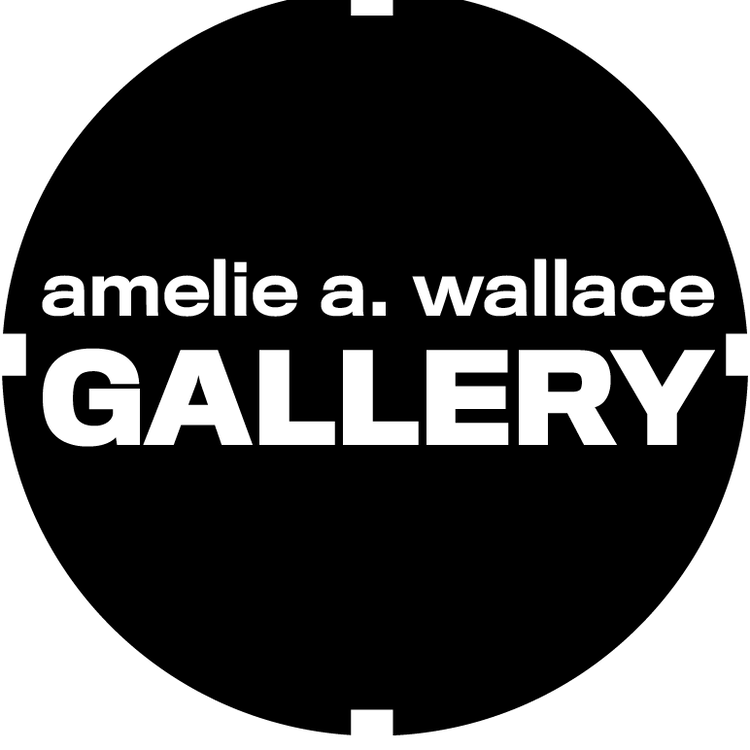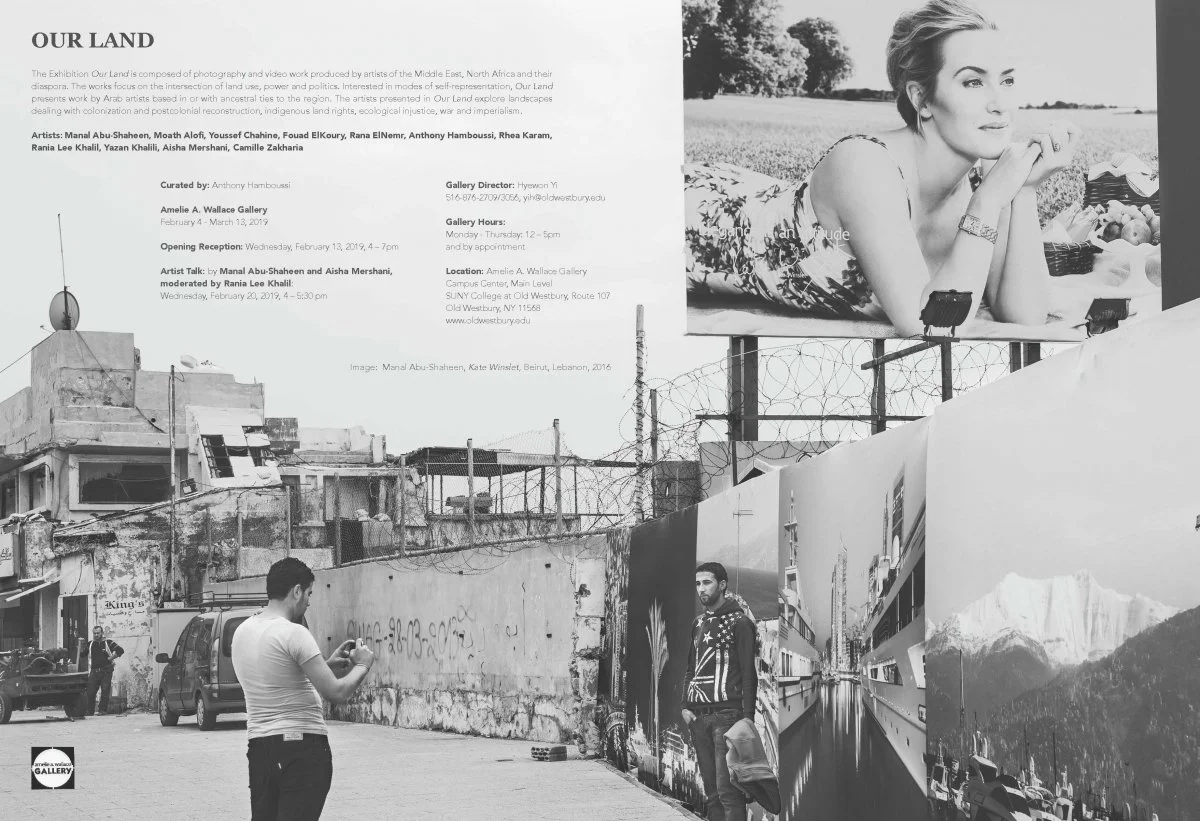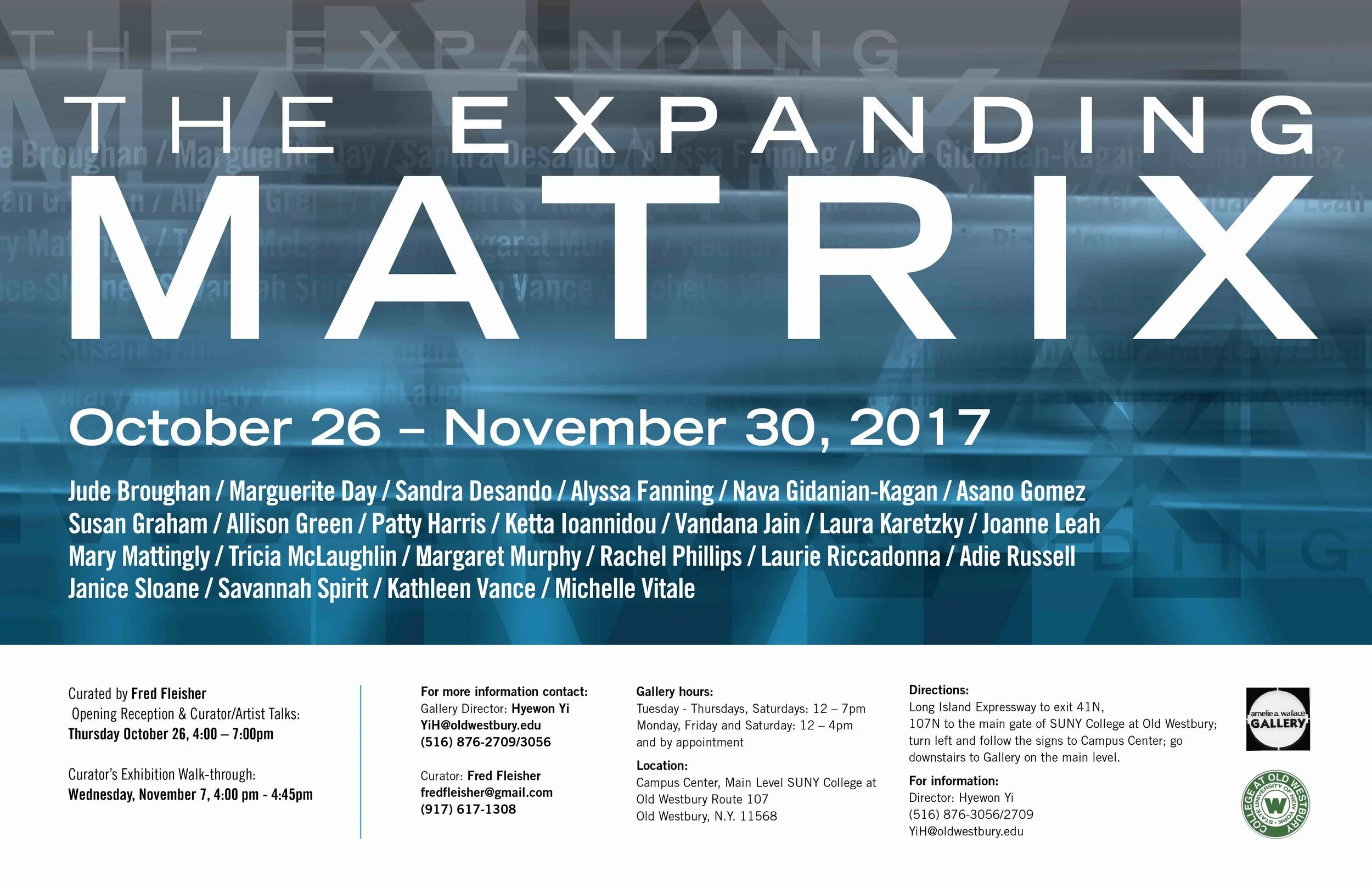Past Exhibitions 2017 - 2018
Our Land
February 4 - March 13, 2019
Our Land is an exhibition comprising photography and video by artists from the Middle East, North Africa, and their diaspora. Curated by Anthony Hamboussi, photographer and adjunct professor of Visual Arts at SUNY College at Old Westbury, this exhibition explores intersections of land, power, and politics to question dominant historical narratives and current Western perceptions of the MENA region. Interested in modes of self-representation, Our Land presents the work of Arab artists based in or having ancestral ties to the region, to consider landscapes of colonization and postcolonial reconstruction, indigenous land rights, ecological injustice, and war.Whatever it is, the way you tell your story online can make all the difference.
ONCE A GHETTO:
The Worlds Created by Jews and Blacks in Brownsville
September 26 - October 25, 2018
“Once A Ghetto: The Worlds Created by Jews and Blacks in Brownsville” is an exhibition examining the Brooklyn neighborhood of Brownsville and its unique place in the working-class history of New York City. Researched by Gilda Zwerman, Professor of Sociology at SUNY Old Westbury, and co-curated with Hyewon Yi, Director of Amelie A. Wallace Gallery, the exhibition presents archival documents, photographs, and videos that offers a long view of a neighborhood that figures significantly in the biographies of its inhabitants and of the City.
Trees Also Speak
Jeremy Dennis / Desert ArtLAB (April Bojorquez and Matthew Garcia) / Courtney Leonard / Victor Masayesva / Will Wilson / Steven Yazzie
Curated by Catherine Bernard
Trees also Speak, was an exhibition that features the work of six Native artists from the United States, including two artists from Long Island. The works cover a diversity of mediums: film, video and photography and mixed media installation. The artists in Trees Also Speak act as storytellers who create narratives that examine the colonial and neo-colonial practices that govern the exploitation of indigenous lands, whether it is tourism, mineral extraction, water contamination, and underline the need for sustainable and shared strategies for land use. In many ways their work is about recovering a collective memory and environmental responsibility. They look for alternative models of thinking that stress and honor our interdependence and connectedness with the lands that we rely upon and on which we stand.
Violated Bodies: New Languages for Justice and Humanity
Curated by Kyunghee Pyun and Deborah Sale
Violated Bodies: New Languages for Justice and Humanity presents powerful images created by six international artists who have reacted to the subject of violence against women. Included in the exhibition is the Silent Tears Project by the Blur Projects artists, the sculpture of Simone Kestelman, and the multimedia work of aleXsandro Palombo and Cat Del Buono. The exhibition, organized by Kyunghee Pyun and Deborah Saleeby-Mulligan, two art historians/art critics based in higher-education institutions, serves as a comment on the #MeToo Movement. The exhibition aims to present artistic and creative approaches to the painful issues surrounding domestic violence and violence against woman in general. It also draws attention to a lesser-known realm of disabled bodies that have been caused by domestic violence.
The Expanding Matrix
Jude Broughan / Marguerite Day / Sandra DeSando / Alyssa Fanning / Nava Gidanian-Kagan / Asano Gomez / Susan Graham / Allison Green / Patty Harris / Ketta Ioannidou / Vandana Jain / Laura Karetzky / Joanne Leah / Mary Mattingly / Tricia McLaughlin / Margaret Murphy / Rachel Phillips / Laurie Riccadonna / Adie Russell / Janice Sloane / Savannah Spirit / Kathleen Vance / Woolpunk (Michelle Vitale)
Curated by Fred Fleisher
October 26 – November 30, 2017
The Expanding Matrix is a group show by twenty-three women artists, curated by Fred Fleisher. While their work varies widely, each of these artists begins with a central concept, chosen material, or primary image of personal importance from which her work expands from concept, to studio practice, to completed work.
The fascinating process of how a work of art begins, weaves itself together, and expands, leads the thoughtful viewer to consider the matrix from which art emanates. For the artists in The Expanding Matrix, a feeling or thought is nurtured to allow it to morph until it takes on a life of its own while still holding onto its matrix.
Parallel reality: Shamus Clisset / Wang Yefeng
September 11 - October 19, 2017
The artists in the two-person new media art show Parallel Reality: Shamus Clisset and Wang Yefeng fabricate virtual worlds built upon 3D computer software such as ZBrush, Blender, and After Effects. Their computer-generated works share a grotesque surrealism that delivers dark humor overlaid with apocalyptic pessimism and orgiastic materialism. Presenting mundane objects rendered in meticulous naturalism, they construct illusionistic fantasies in digital prints, video projections, and installations that warn against the human folly of costly and absurd undertak- ings. Both artists draw upon vast libraries of virtual objects, repurposing them for each project. The sense that “something has gone wrong” in their work reflects the collective anxiety of living in the modern world where we are inundated with constant threats of war, natural disasters, climate change, the demise of local cultures, and political and economic power conflicts. The slick appearance of the artificial world Clisset and Wang create also bespeaks the larger culture of new media that has
been made commonplace through video games and cinematic animation, but these artists confront issues of human perception and the culture of fakeness in deliberate and thoughtful artworks.
Gelah Penn: Situations and Polyglots
April 1 – May 6, 2017
Gelah Penn: Situations and Polyglots is a solo exhibition by Gelah Penn, a Brooklyn-based artist known for her site-responsive installations and works on paper. Situations, Penn’s installation at the Wallace Gallery, has been realized over the course of ten days, and recent drawings from her Polygot series are also shown.
In Situations, Penn uses malleable and flexible industrial materials such as convoluted foam, mosquito netting, Mylar, latex tubing, garbage bags, and plastic tarps. The artist cuts, rips, and stretches her diverse materials into shapes that converge and diverge to create a visual spectacle. Bolder than previous installations that had emphasized delicate linear qualities, the work in the Wallace gallery will use larger gestures and more daring movements through the dynamic placement of planes on the gallery’s walls and at its corners.
In the Polyglot series, Penn defies conventional notions of drawing by employing plastic garbage bags, metal staples, acrylic paint, and, in some cases, digital prints applied to lenticular plastic and Mylar. Folding, cutting, inserting, marking, and stapling techniques playfully hide and reveal shredded black garbage bags pulled through incisions in the “paper” and fold over its edges. The results are the dichotomous effects of seen and unseen, translucence and opacity, seriousness and levity, dark and light.







